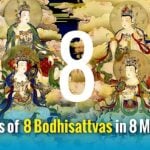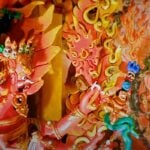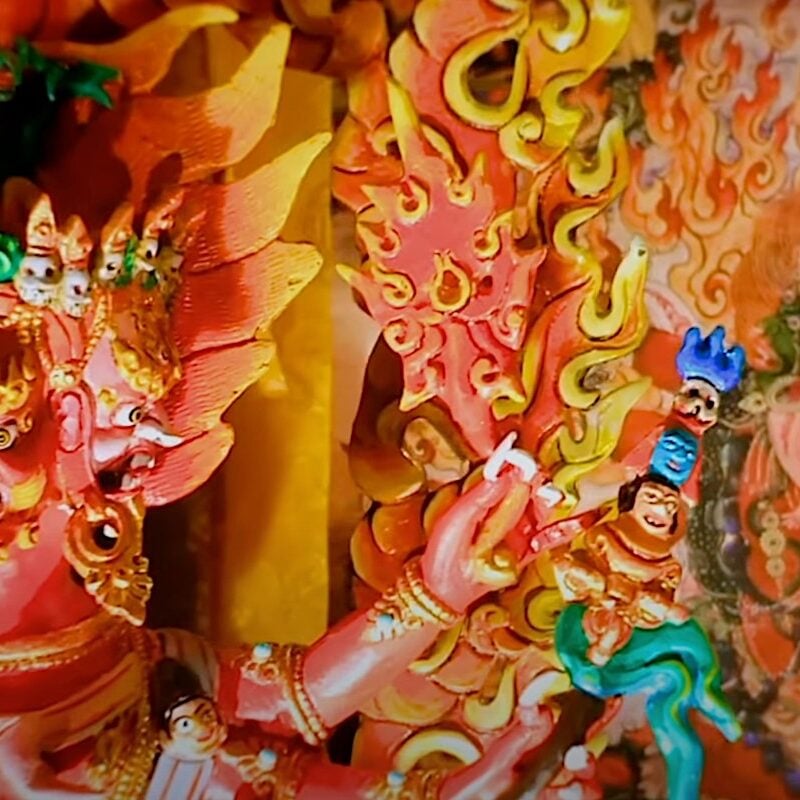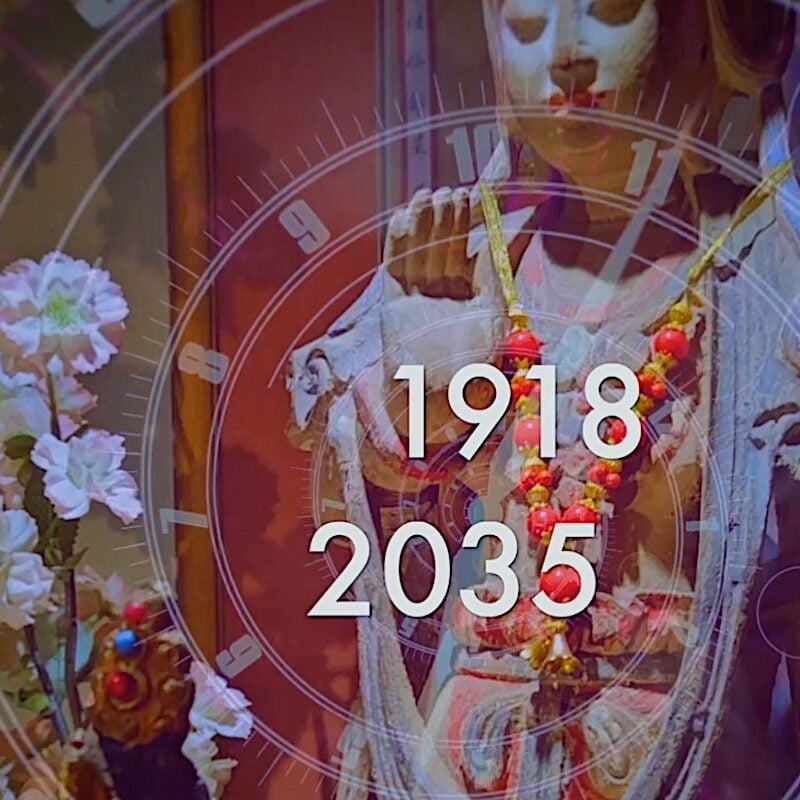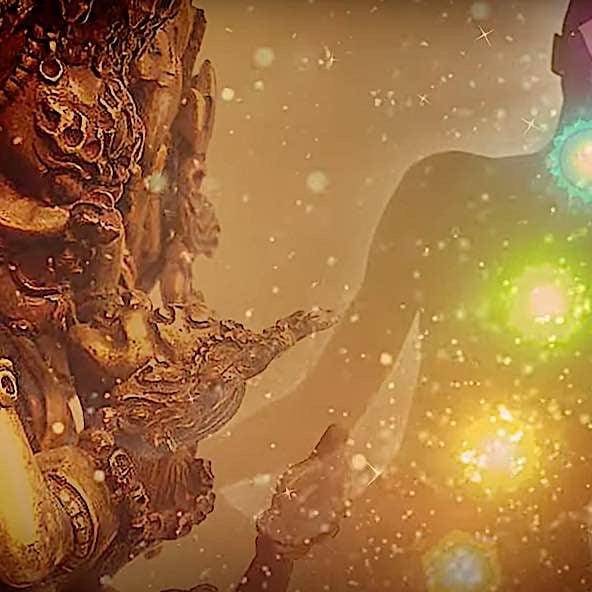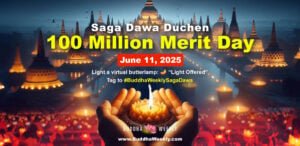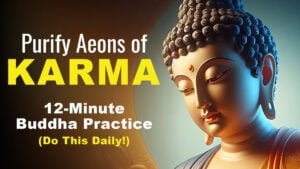Cham Dance in Tibetan Buddhism and Vajrayana: What is it and why is it important for Losar and other special occasions
The Cham Dance is a special Buddhist ritual dance that is performed in order to drive away evil spirits. It is an important part of Tibetan Buddhism and culture, and has been passed down for centuries. The dance is said to cleanse the mind and body, and brings good luck and fortune to those who participate. If you are ever lucky enough to witness a Cham Dance (Tibetan: འཆམ་, Wylie: ‘cham), it is sure to be a memorable experience.
What is the cham dance and what does it represent in Tibetan Buddhism?
The Cham Dance, or Cham Dances, are a tradition of Tibetan Buddhism, connected to the Vajrayana school of Buddhism. It is a masked dance which involves performers chanting and dancing with colorful masks, often dramatically portraying scenes from the Great Padmasambhava’s life.
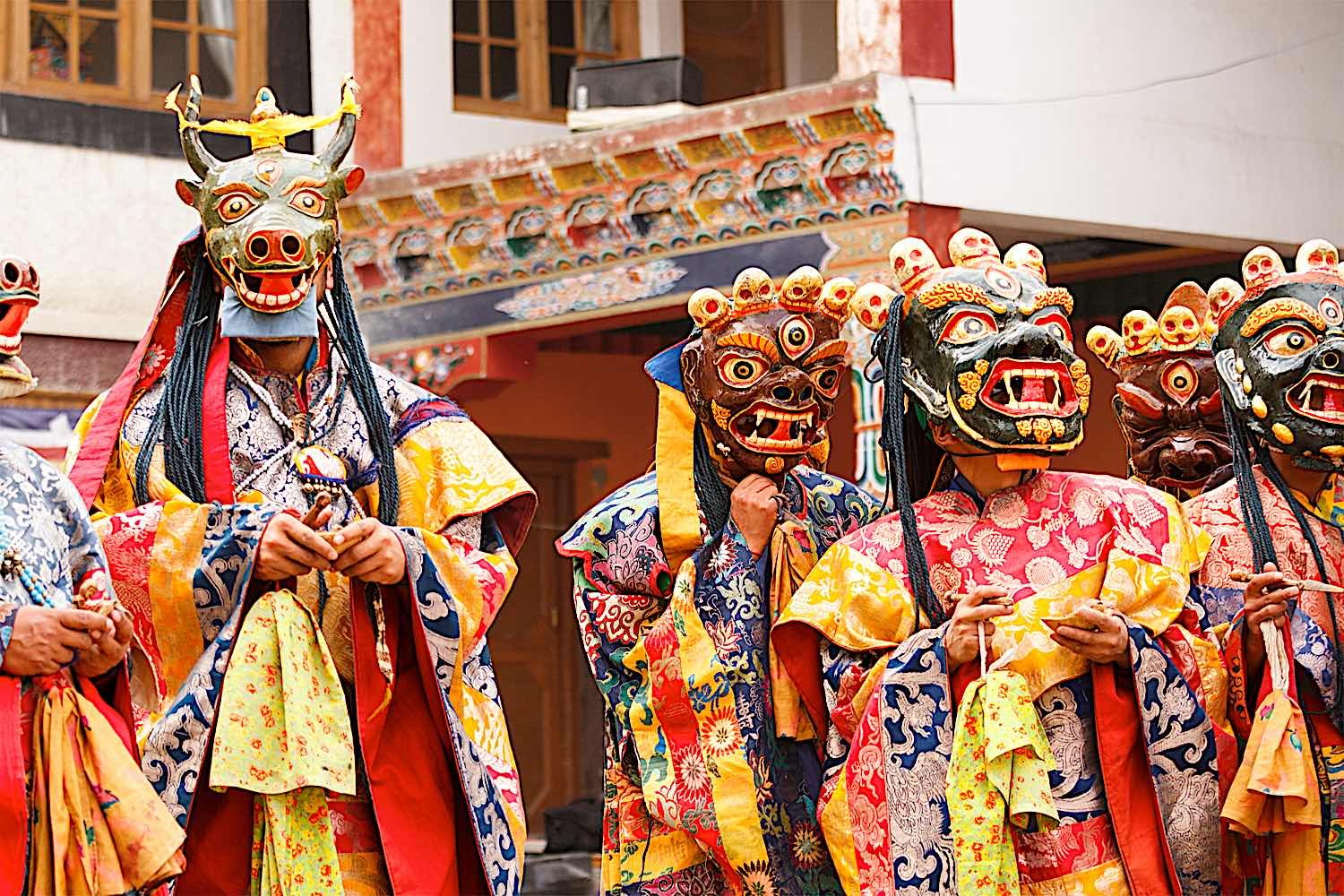
Cham dance performances often take place in monasteries and are meant to bring blessings and peace upon the audience.
This unique form of practice is believed to represent the victory over the four inner impediments or defects (anger, pride, delusion, and envy) in order to achieve full enlightenment. It also serves as an expression of spiritual devotion as it combines both visual artistry such as colorful costumes and masks, as well as rhythmical practices like musical instruments. The Cham Dance thus reflects a deep respect for Buddhist teachings while also providing an enjoyable performance.
Video of Gutor Mahakala Cham
In observance of Losar ( Tibetan New Year ), five years ago, several monks from at least three different Kagyu monasteries performed an over 10 hour-long Cham ( ritual dance ). The proceedings were part of the activities of the 34th Kagyu Monlam, which took place in Bodhgaya, India.
Why is the cham dance important to Tibetan Buddhists?
The cham dance is an important part of Tibetan Buddhist spiritual practice. It is rooted in cleansing and purification rituals that seek to bring harmony and balance to the body, mind, and spirit. According to historical records, it originated with the 8th century Mahasiddha Padmasambhava, an influential teacher of Vajrayana Buddhism who brought it to Tibet.
The movements of the cham dance are said to help connect worshippers with their divine nature, allowing them to draw closer to their ultimate realization of enlightenment. It has become a regular part of traditional Tibetan spiritual life for many centuries.

When is it performed and how can you participate in the cham dance?
Cham is typically performed during Losar, the Tibetan New Year celebration, and on other special occasions such as anniversaries and birthdays. It is also often performed when there is a need for purification (for example, before the New Year!)
One form, the most famous “black hat” cham, begins with a procession of monks in black hat costumes leading the way from the temple to the courtyard or village square. Inside each costume is a monk who then performs a series of intricate and vibrant steps – otherwise known as the black hat dance.
Cham Dance at Rongwu Monastery, Repkong. Amdo Region.
All participants can dance alongside these monks, forming what appears to be a magnificent ring of color, sound, and motion. To join in you’ll need your own brightly colored outfit, which ranges from silky gowns fitted with flamboyant feathers and tassels to complexly designed ceremonial headdresses.

Buddhist monks perform this dance to both achieve enlightenment and vanquish evil forces. The dancers often carry a skull, scarf, and a phurba — three-edged blade sacred to Vajrakilaya, Padmasambhava and Hayagriva — carried as an expression of faith.
In another “specialized” cham, each year at Kumbum Monastery in Qinghai, a traditional dance is performed to commemorate the Council of Lhasa and its two great debators: Moheyan and Kamalaśīla. This celebratory display captures both the narrative and visual elements of their lively debate for all who come to witness it.
In Bhutan, the Cham are performed during significant religious events called tshechu. Monks and nuns, along with villagers alike all take part in these remarkable performances that occur at the dzong within each district. To ensure their preservation for generations to come, the Royal Academy of Performing Arts works diligently to promote this beautiful culture through its organized events and festivals across Bhutan.

Tibetans usually perform chams to large audiences during the Monlam Prayer Festival — the Great Prayer Festival, on 4th–11th day of the 1st Tibetan month in Tibetan Buddhism. At the Great Prayer Festival, we come together to offer prayers with immense trust and reverence for the extended life of all holy Gurus from every tradition. We call upon the Dharma to spread throughout each sentient being’s mind and work towards a world at peace. Our collective prayers put an end to any impediments that disrupt tranquility – establishing harmonious conditions in which everyone can thrive.
What are some of the benefits of participating in the cham dance, even if you’re not Tibetan Buddhist?
Taking part in the cham does not require any religious affiliation – anyone can experience its great benefits regardless of their beliefs. It’s an incredibly active form of meditation, with practitioners moving as part of a ritual that helps to increase focus and improve core physical strength. Participants are also likely to feel energized after taking part, while they may find that their creative abilities are unlocked too. With the sound of traditional musical instruments aiding the ritual, it’s no wonder so many people enjoy this ancient experience.
More articles by this author
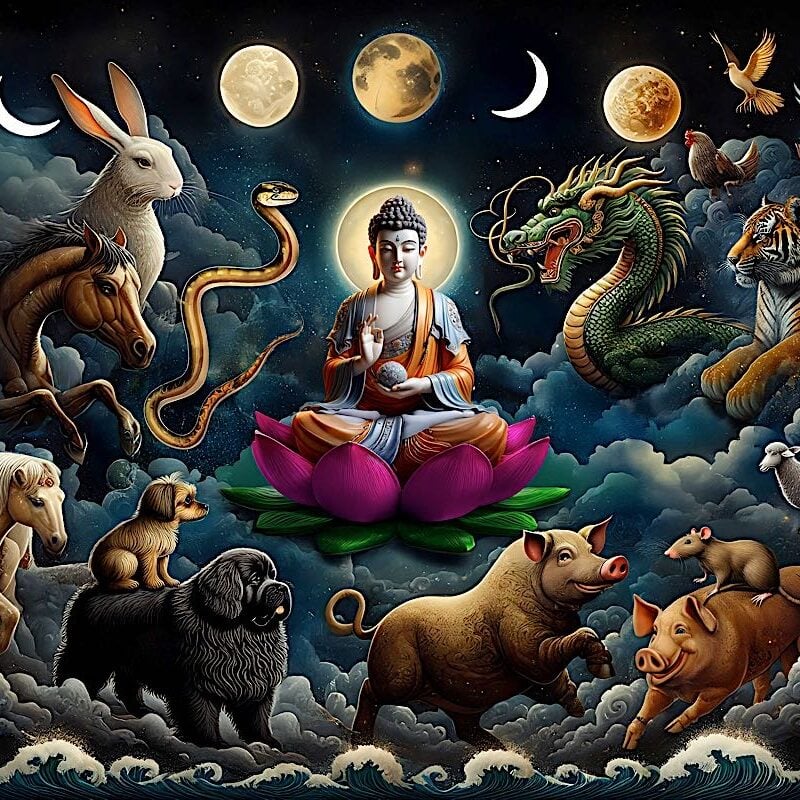
Who is my Enlightened Life Protector Based on Tibetan Animal Sign Zodiac in Buddhism? According to Mewa, Mahayana tradition and Kalachakra-based astrology (with Mantra Videos!)
Search
Latest Features
Please support the "Spread the Dharma" mission as one of our heroic Dharma Supporting Members, or with a one-time donation.
Please Help Support the “Spread the Dharma” Mission!

Be a part of the noble mission as a supporting member or a patron, or a volunteer contributor of content.
The power of Dharma to help sentient beings, in part, lies in ensuring access to Buddha’s precious Dharma — the mission of Buddha Weekly. We can’t do it without you!
A non-profit association since 2007, Buddha Weekly published many feature articles, videos, and, podcasts. Please consider supporting the mission to preserve and “Spread the Dharma." Your support as either a patron or a supporting member helps defray the high costs of producing quality Dharma content. Thank you! Learn more here, or become one of our super karma heroes on Patreon.
Lee Kane
Author | Buddha Weekly
Lee Kane is the editor of Buddha Weekly, since 2007. His main focuses as a writer are mindfulness techniques, meditation, Dharma and Sutra commentaries, Buddhist practices, international perspectives and traditions, Vajrayana, Mahayana, Zen. He also covers various events.
Lee also contributes as a writer to various other online magazines and blogs.





